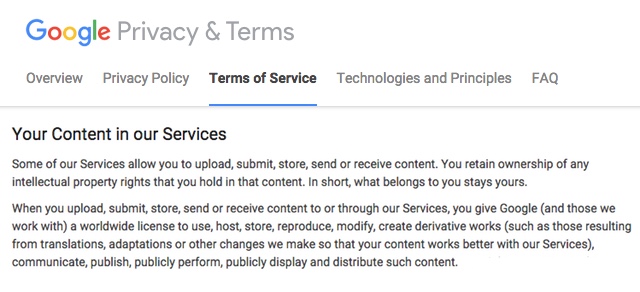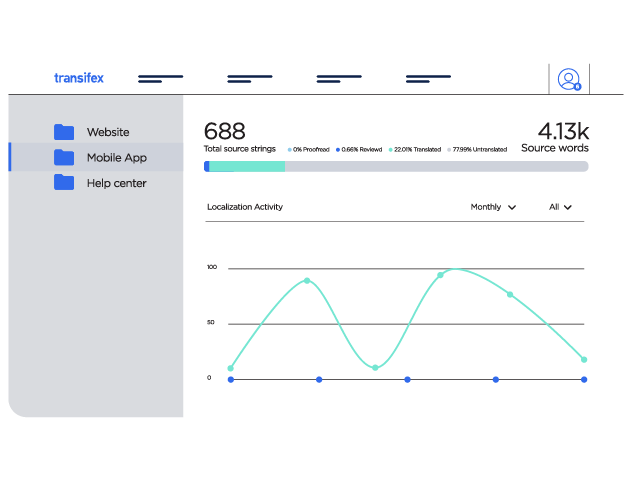
How Accurate is Google Translate for Website Translation?
The advent of the Internet made it possible for businesses to reach a global audience. Yet, what use is a website or mobile app if it can only be viewed in a single language? Today, businesses need digital content to be translated quickly, almost on the fly, and a single or even team of translators may not be able to provide acceptable turnaround times or quality. In an effort to expedite the process, many businesses are turning to Google Translate for website translation and website localization.
The Google Translate Algorithm
Google Translate is a translation service that can be used to translate a word, sentence, paragraph, or a full web page. It uses a translation algorithm that is based on language pattern matching, termed Statistical Machine Translation or SMT. The algorithm references human-translated documents from a multitude of sources dating back to 1957 and looks for patterns in the translation.
Actual translations are then based on the probability that the translation of two strings match, e.g. ‘hello’ in English (Source language) is highly likely to be ‘Hola’ in Spanish (target language). The probability of getting an accurate translation is thus dependent on the database of translated texts.
Using Google Translate for Business Needs
When serving customers in multiple countries, translations are required in all areas of business from replying to customer support emails to displaying technical documentation on a website. To meet this large scope of translation needs, a number of businesses (around 549,088 to be precise) use the Google Translate widget to translate their digital content. All the user has to do is go to the Google Translate tools page, complete the setup process as instructed, and at the end, copy the provided code snippet onto every page that is to be translated.
Because the Google Translate widget uses an algorithm that is based on probability, the system is most effective when used with smaller chunks of language to convey simple messages. For example, responding to a customer request email in his or her native language may be fairly straightforward, while technical documents, because of inaccuracies around grammar, may not be as easy to translate accurately. The British Medical Journal (BMJ) reviewed Google Translate’s ability to perform language translations in a paper titled, “Use of Google Translate in Medical Communication: Evaluation of Accuracy” and found the accuracy of translating medical documents to be less than 58% with some errors being potentially life threatening.
Can Businesses Rely on Google Translate for Accurate Translations?
Using a translation method that relies on probability increases the chances for errors in a given translation. The translated text will only be as good as the best possible available texts and, therefore, will only be “close” and never as good as a human translation.
Not to mention that it’s currently hard for machines to take context into account, which plays a massive role in translation.
With mobile apps, websites, and software products, in particular, marketing messages and notifications such as error messages must be translated with respect to the context of the entire text as opposed to each word individually.
Businesses will likely need a more flexible and robust translation alternative that can take into account the nuances of meanings and expressions to attain high-quality and accurate translations.
Another area of weakness in the Google translation service is in the types of language and pairs of languages chosen to translate between. An example of this is translating a text from Serbian to Korean. In these situations, you are likely to have few, if any, translated texts to build a decent database.
To compensate, Google Translate will use a more complex route to obtain a translation, perhaps translating the source language to a more common language like English or Spanish before translating the original content. This process leaves more room for error and can result in translations that do not make sense to the end user.
Data Privacy Issues and Google Translate
Google’s Terms of Service agreement is another point to consider when translating online content and documentation. Their Terms and Conditions state:
The above clause is also perpetuated in the Translate API terms of Google’s product. This may be a turn off for companies because it states that data privacy may not be respected, an especially important note if proprietary documents or content require translations.
Alternatives to Google Translate
Businesses often cite cost and simplicity as the top reasons for using Google Translate to translate web and app-based content. While Google Translate may be a short-term solution, its unreliability could potentially cost businesses in the long term as content may be incorrect or even offensive to individuals in a certain locale if translated out of context. This is where localization platforms come into play.
A localization platform is able pull translatable strings from software or a website or app and collect them on a platform where individuals can translate them. These individuals can be hired from a professional translation agency, or a company can leverage their user base to crowdsource translations.
The benefit with both of these options is that content is translated in context as opposed to word for word. After translations are completed, they can then be pushed back into the product and viewed by customers. The process is automated, making the job easier for developers, and overall, provides more flexibility and control than the Google Translate widget.
The Perfect Translation Combination
The basic premise of using pre-translated documents as a basis for translation is a sound one. The devil, however, is in the details.
Finding a balance between fast and accurate translations may be found in using an automated localization platform that uses both computer-assisted translations, as well as input from native speakers.
This creates a powerful and intelligent way to enjoy accurate translations while conveying the right message to the right audience.
The Transifex Translation Management System gives you the option of working with both machine translation as well as translators; translators that you can bring in yourself or ask our translation vendors.
Related posts
5 Uncommon Yet Interesting Machine Translation Software Use Cases
Machine Translation: What Are the Advantages and Disadvantages










